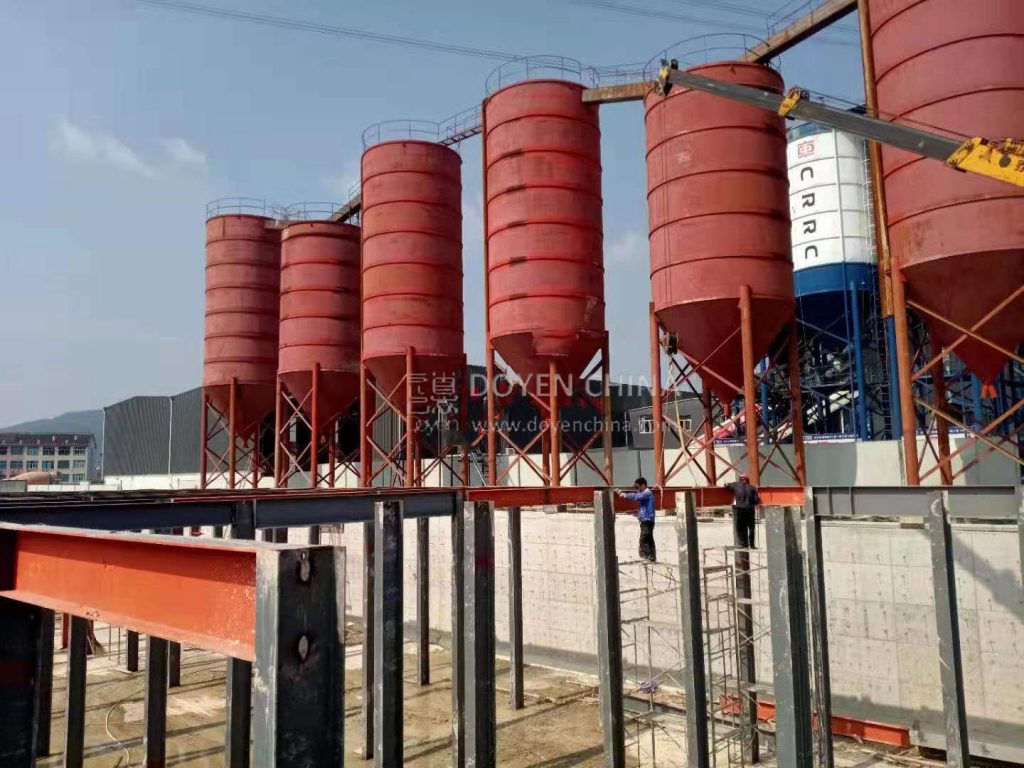

Tel:
+86-757-8633-0278
Email:doyen@doyenchina.com
Fax:+86-757-86287390
Address:Room 201, Building No. 24, Yicui Rose Garden, No. 2, Jihua 7 Road, Chancheng District, Foshan City, Guangdong Province, China 528000.
The characteristics of rural domestic sewage: kitchen cooking water, bathing, washing water, and toilet flushing water. These waters are scattered, and there are no collection facilities in the countryside. With the washing of rainwater, they flow into rivers, lakes and marshes, ditches, ponds, reservoirs, etc. The main feature of surface water, soil water and groundwater is the high content of organic matter.
1. Water quality characteristics. (1) The population of rural villages and towns is small, widely distributed and scattered, and most of them have no sewage discharge pipe network; (2) The concentration of rural domestic sewage is low and the changes are large; (3) The nature of most rural domestic sewage is not much different, and the water is basically It does not contain heavy metals and toxic and hazardous substances (but with the improvement of people’s living standards, some domestic sewage may contain heavy metals and toxic and hazardous substances), it contains a certain amount of nitrogen and phosphorus, the water quality fluctuates greatly, and the biochemical property is strong; (4) ) The water quality is different at different times; (5) The sewage discharged from the toilet has poor quality, but it can be used as fertilizer in the septic tank.
2. Water characteristics. (1) Generally, the amount of domestic sewage in rural areas is relatively small. Except for small towns, the rural population lives in scattered areas, and the amount of water is relatively small, and the amount of domestic sewage generated is relatively small; (2) The coefficient of change is large, and the living patterns of residents are similar. As a result, the discharge of domestic sewage in rural areas will be larger sooner or later than during the day, and the discharge at night will be small, and the flow may even be cut off. The water volume changes significantly, that is, the non-water discharge is in a discontinuous state and has the characteristics of large changes; There is a peak time.
3. Characteristics of emission system. Rural domestic sewage is generally discharged extensively. In many rural areas, there is no complete sewage discharge system, and sewage is discharged to nearby water bodies along the side ditches or roads. A few areas have complete sewage discharge systems.
The content of organic matter in rural domestic sewage is high, and the content of n and p increase. People’s unconscious discharge and rain washing make a large amount of organic matter and n, p and other substances flow into lakes and other water bodies. If they are not treated and used, they will often cause eutrophication and adversely affect people’s health.
2. Selection of rural domestic sewage treatment technology
(1) Technical route of sewage treatment
The choice of rural sewage treatment technology should be done within one’s capacity. Taking full account of the general situation of poor financial resources in rural areas and low actual affordability of farmers, the choice of treatment technology cannot be blindly compared, or blindly selected fashionable and advanced, with good treatment effects. A treatment process with a high level of automation control should be emphasized, and consideration should be given to the selection of suitable technologies for sewage treatment that are mature and reliable, and suitable for rural characteristics and actual conditions. It is suggested that the selection of sewage treatment technology should give priority to two goals: one is to meet the standard discharge or reuse; the other is to focus on economical application, low operating cost, simple management and maintenance.
At present, there are many treatment technologies for domestic and foreign domestic sewage treatment, and their names are also various, but from the principle of technology, they can usually be classified into two categories: the first category is the natural treatment system. Using the principles of soil filtration, plant absorption and microbial decomposition, it is also called ecological treatment system. Commonly used are: constructed wetland treatment system, underground soil infiltration purification system, etc.; the second category is biological treatment system, which can be divided into aerobic Biological treatment and anaerobic biological treatment. Aerobic biological treatment is to aerate sewage through power, cultivate microbial strains, use microbial strains to decompose, consume and absorb organic matter, nitrogen and phosphorus in sewage. Commonly used are: ordinary activated sludge method, ao method, biological turntable and sbr method and so on. Anaerobic biological treatment uses the metabolic process of anaerobic microorganisms to convert organic pollutants into inorganic substances and a small amount of cellular substances without the need to provide oxygen. Commonly used are: anaerobic contact method, anaerobic filter, uasb litre Flow anaerobic sludge bed, etc.

(2) Constructed wetland treatment system
Villages with conditions should make full use of existing farmland irrigation and drainage channels and nearby wasteland, abandoned ponds, depressions and swamps to build a constructed wetland treatment system.
The sewage wetland treatment system is divided into natural and constructed wetland treatment systems. Natural wetland is a natural marshland. Constructed wetland sewage treatment technology is a new technology based on natural ecological principles to make sewage treatment engineering and practical. Distribute the sewage in a controlled manner to the land where the soil is often saturated and grow swampy plants like reeds and cattails, using the absorption of plant roots and the action of microorganisms, and through multi-layer filtration to achieve pollution degradation and purification The purpose of water quality is to make full use of the inhabiting plants, microorganisms, plant roots in the underground artificial medium, and the physical and chemical characteristics of the medium to combine the natural and artificial treatment of sewage purification.
The wetland treatment system has simple process equipment, convenient operation, maintenance and management, low energy consumption, low engineering infrastructure, low operating costs, strong adaptability to influent loads, can withstand shock loads, and has good and stable purified water quality. Disadvantages It covers a large area and is susceptible to climate, and the odor of surface runoff is relatively large.
(3) Underground soil infiltration purification system
Several scattered households or more than a dozen households are suitable for underground soil infiltration purification system
The underground soil infiltration purification system is a new type of small-scale sewage purification technology created by engineering and practical application based on the principles of natural ecology. It is a controlled distribution of sewage to a certain structure and approximately distance from the ground. 50cm deep and in a soil layer with good diffusion properties. The mixed sewage slowly passes through the gravel and sand layer around the water pipe, and diffuses into the nearby soil layer under the action of the soil capillary. There are a large number of microorganisms in the surface soil, the root zone of the crop is in aerobic state, and the pollutants in the sewage are filtered, absorbed and degraded. Therefore, the treatment process of underground infiltration is very similar to the slow infiltration treatment process of sewage. Due to the low load and long residence time, the water purification effect is very good and stable. The underground soil infiltration purification system is easy to construct, simple to maintain and manage, low capital investment, and low operating costs. The entire processing device is placed underground, which does not damage the landscape and does not produce odor.

(4) Aerobic biological treatment systemThe aerobic biological treatment system is a commonly used treatment technology in the new rural sewage treatment. There are many aerobic biological treatment processes, each with its own advantages and disadvantages. When choosing, it is necessary to carefully demonstrate and compare according to the actual situation, focusing on economic application.
The biological treatment method is to use fans and other equipment to deliver oxygen to the sewage, cultivate biological bacteria and microorganisms, and decompose most of the organic matter in the sewage into non-polluting carbon dioxide, water and other substances through the bacteria and microorganisms, and a small part is synthesized into cellular substances to promote The microorganisms grow and are discharged in the form of surplus sludge, so that the sewage can be purified and discharged. For example, the sbr method integrates aeration, sedimentation, and drainage functions, and continuously converts, eliminating the need for traditional sludge return equipment, greatly reducing construction costs; a20 method has the functions of denitrification and phosphorus removal, as well as biological turntable treatment Process, membrane bioreactor treatment process, etc. Compared with the natural treatment system, the biological treatment method has a small area, strong ability to resist external influences such as weather, a wide range of construction sites, stable treatment, and high treatment efficiency. However, infrastructure investment and operating costs are higher than those of natural treatment systems.

SAMSUNG CAMERA PICTURES
(5) Anaerobic biological treatment system
Since the 1980s of last century, my country began to develop and research the domestic sewage anaerobic biological method. Many different forms of non-powered or micro-powered low energy consumption integrated sewage treatment devices have been applied. For example, the unpowered buried domestic sewage treatment device adopts unpowered anaerobic biofilm technology, the process flow is simple, does not consume energy, all is buried underground, and does not require special management. Compared with aerobic biological treatment, the capital investment of the technical equipment of the unpowered buried domestic sewage treatment device is slightly higher than that of the aerobic treatment, and there is no daily operating cost.
The anaerobic biological method currently has some technical problems, which are mainly manifested in the low biological treatment efficiency, especially the low nitrogen and phosphorus removal rate, which limits its application to a certain extent.
Practice has proved that the above methods can solve the problem of rural domestic sewage treatment, but the construction and operation costs should be considered in the application, and the selection should be based on the actual situation.
Doyen specializes in providing belt press equipment for the Southeast Asian market. Welcome to visit our workshop, according to the actual situation of your company, develop a more scientific dehydration program.Welcome to joyce@doyenchina.com or visit https://www.doyenchina.com.
Dec-06-2020
admin

 +86-757-8633-0278
+86-757-8633-0278 doyen@doyenchina.com
doyen@doyenchina.com Sitemap
Sitemap